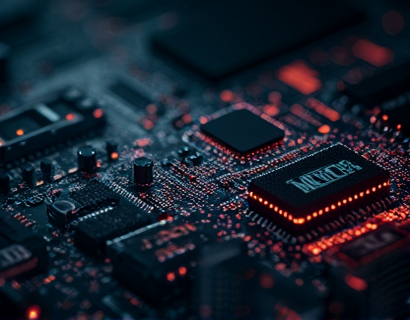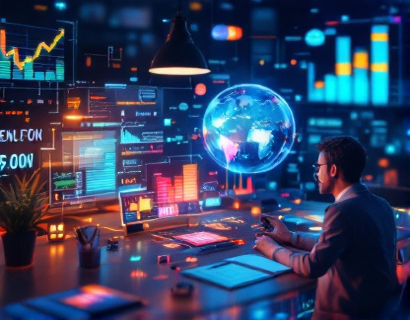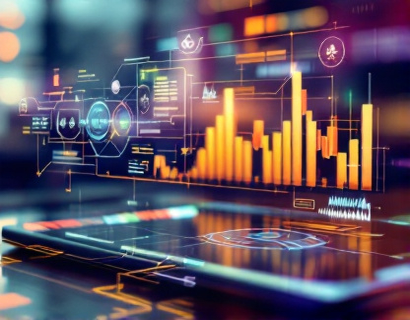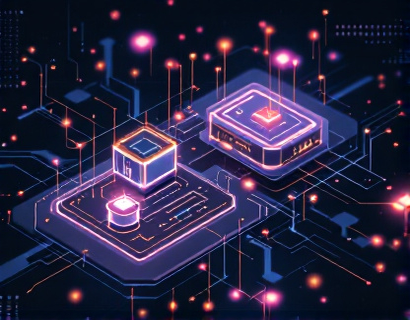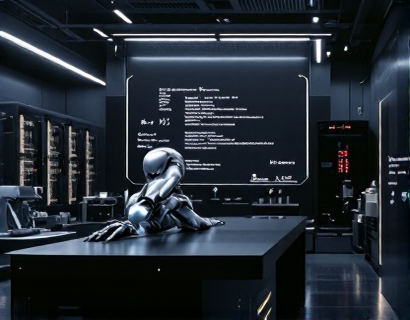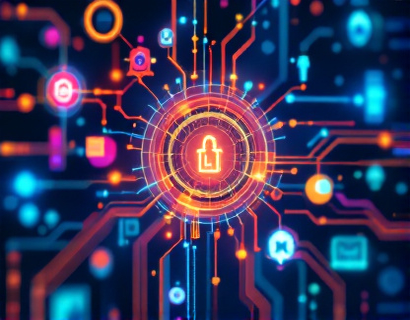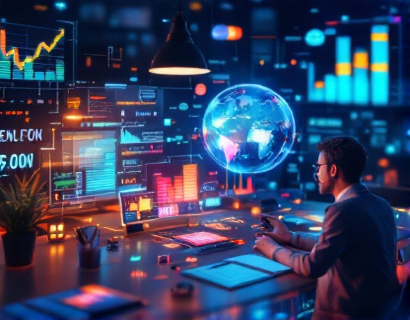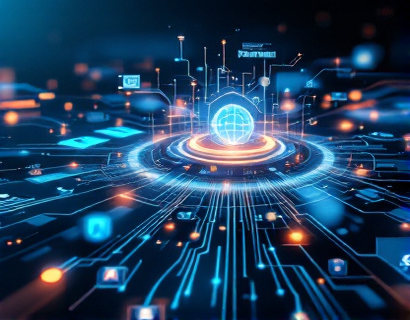Unleashing Next-Gen Productivity: The Synergy of Crypto and AI
The intersection of cryptocurrency and artificial intelligence (AI) is giving rise to a new era of digital productivity tools. This fusion is not just about combining two cutting-edge technologies but about creating a synergy that enhances efficiency, security, and innovation. For tech professionals and enthusiasts, understanding how these technologies work together can unlock new possibilities in the digital landscape.
The integration of blockchain technology with AI is paving the way for advanced digital solutions that were once the stuff of science fiction. These solutions are designed to streamline processes, secure data, and provide unprecedented levels of automation and intelligence. This article delves into the latest tools and applications that leverage this synergy, offering a comprehensive guide for those looking to stay ahead in the tech curve.
Understanding the Basics: Crypto and AI
To fully appreciate the potential of crypto and AI, it's essential to understand the fundamentals of both technologies. Cryptocurrency, at its core, is a digital or virtual currency that uses cryptography for security. It operates on a decentralized network, typically a blockchain, which ensures transparency and immutability. This decentralized nature eliminates the need for intermediaries, reducing transaction costs and increasing speed.
Artificial intelligence, on the other hand, refers to the simulation of human intelligence in machines that are programmed to think and learn like humans. AI encompasses various subfields, including machine learning, natural language processing, and computer vision. These technologies enable machines to perform tasks that traditionally required human intervention, from simple data analysis to complex decision-making.
The combination of these two technologies creates a powerful toolset. Blockchain's transparency and security can enhance the reliability of AI systems, while AI can optimize the efficiency and functionality of blockchain-based applications. This synergy is particularly beneficial in industries seeking to enhance their digital operations and stay competitive.
Enhancing Security with Crypto and AI
One of the most significant advantages of combining crypto and AI is the enhancement of security measures. Traditional security protocols can be vulnerable to breaches and fraud, but the integration of blockchain and AI can significantly mitigate these risks.
Blockchain's inherent security features, such as cryptographic hashing and decentralized consensus mechanisms, provide a robust foundation. AI can further bolster this by detecting and responding to anomalies in real-time. Machine learning algorithms can analyze patterns and identify potential threats, allowing for proactive security measures. For instance, AI-driven systems can monitor blockchain transactions and flag suspicious activities, reducing the risk of fraud and cyberattacks.
Moreover, AI can improve the management of private keys and wallet security. Traditional methods of storing private keys are often prone to human error and vulnerabilities. AI-powered solutions can generate and manage complex cryptographic keys, ensuring that only authorized users can access sensitive information. This not only enhances security but also simplifies the user experience.
Optimizing Data Management with AI and Blockchain
Data management is a critical aspect of modern digital operations. The sheer volume of data generated daily poses challenges in terms of storage, processing, and analysis. The combination of AI and blockchain offers innovative solutions to these challenges.
Blockchain provides a decentralized and immutable ledger for storing data, ensuring its integrity and availability. AI, with its advanced data processing capabilities, can analyze this data in real-time, extracting valuable insights and patterns. This synergy enables organizations to make data-driven decisions more efficiently and accurately.
For example, AI algorithms can be deployed on a blockchain network to perform complex data analysis tasks, such as predictive maintenance in industrial settings or fraud detection in financial services. The decentralized nature of blockchain ensures that data is not stored in a single point of failure, reducing the risk of data loss or manipulation. AI can further optimize this process by automating data cleaning, transformation, and analysis, saving time and resources.
Automating Processes with Smart Contracts and AI
Smart contracts, self-executing contracts with the terms directly written into code, are a cornerstone of blockchain technology. When combined with AI, smart contracts can become even more powerful and versatile.
AI can enhance smart contracts by adding intelligent decision-making capabilities. For instance, AI algorithms can analyze real-time data and adjust the parameters of a smart contract dynamically, ensuring that it operates optimally under changing conditions. This is particularly useful in scenarios like automated supply chain management, where smart contracts can adjust orders and payments based on real-time inventory levels and market conditions.
Moreover, AI can help in the creation and optimization of smart contracts. Machine learning models can analyze historical data and identify patterns to suggest the most efficient contract structures and clauses. This not only reduces the risk of errors but also speeds up the contract development process, making it more accessible to non-technical users.
Enhancing User Experience through Personalization
Personalization is a key trend in digital applications, and the combination of crypto and AI can take this to new heights. By leveraging blockchain's secure and transparent data storage, along with AI's advanced analytics, applications can offer highly personalized experiences to users.
AI algorithms can analyze user behavior and preferences, providing insights that can be used to tailor content, recommendations, and services. For example, a decentralized social media platform can use AI to curate a feed based on a user's interests and interactions, while ensuring that data is stored securely on a blockchain. This not only enhances user engagement but also builds trust through transparency and control over personal data.
Furthermore, blockchain-based identity verification can ensure that personal data is managed securely and compliantly. AI can streamline the verification process, reducing friction for users while maintaining high security standards. This combination can revolutionize industries such as finance, healthcare, and e-commerce, where personalized and secure services are paramount.
Decentralized Finance (DeFi) and AI
Decentralized Finance (DeFi) is a rapidly growing sector that leverages blockchain technology to create financial services without traditional intermediaries. The integration of AI into DeFi platforms can significantly enhance their functionality and accessibility.
AI can improve risk assessment and management in DeFi by analyzing vast amounts of data to predict market trends and identify potential risks. This can help in designing more robust and resilient financial products. For instance, AI-driven algorithms can optimize lending and borrowing processes, adjusting interest rates and terms based on real-time market conditions.
Additionally, AI can enhance the user experience in DeFi by providing intelligent financial advice and automating complex transactions. Users can benefit from personalized investment strategies and automated portfolio management, all while maintaining control over their assets. The transparency of blockchain ensures that all transactions are traceable and verifiable, adding a layer of trust to these decentralized financial services.
Challenges and Considerations
While the potential of combining crypto and AI is immense, there are several challenges and considerations to keep in mind. One of the primary concerns is the regulatory landscape. The intersection of these technologies operates in a relatively uncharted legal territory, and compliance with existing regulations can be complex.
Another challenge is the technical complexity involved in integrating blockchain and AI systems. Developers need to possess a deep understanding of both technologies to create seamless and efficient solutions. Additionally, the computational resources required for AI algorithms can be substantial, and ensuring scalability and performance is crucial.
Privacy is also a significant concern. While blockchain offers transparency, it can also expose sensitive data if not properly managed. AI algorithms must be designed to handle data securely and comply with privacy regulations such as GDPR. Implementing zero-knowledge proofs and other privacy-preserving techniques can help mitigate these risks.
Future Outlook: The Next Generation of Digital Solutions
The future of digital solutions lies in the continued convergence of crypto and AI. As these technologies mature, we can expect to see more innovative applications that push the boundaries of what is possible. From decentralized autonomous organizations (DAOs) powered by AI to advanced cryptographic protocols enhanced by machine learning, the possibilities are endless.
For tech professionals and enthusiasts, staying informed about the latest developments in both crypto and AI is essential. Engaging with communities, participating in research, and experimenting with new tools can provide a competitive edge in the rapidly evolving digital landscape. The fusion of these technologies is not just a trend but a fundamental shift in how we approach digital productivity and innovation.
In conclusion, the combination of cryptocurrency and artificial intelligence is transforming the way we work, interact, and manage our digital lives. By leveraging the strengths of both technologies, we can create more secure, efficient, and intelligent solutions that enhance productivity and drive progress. Whether you're a developer, a business leader, or a curious individual, embracing this synergy can open up new opportunities and pave the way for a more connected and intelligent future.




